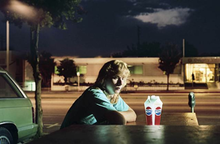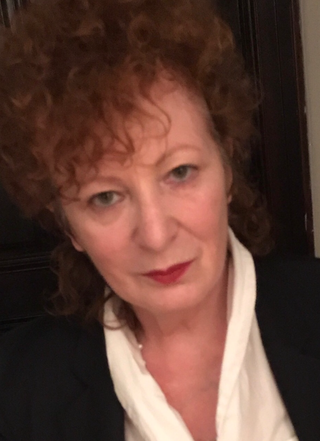Work

Des Moines, Iowa, $30
DiCorcia alternates between informal snapshots and iconic quality staged compositions that often have a baroque theatricality. [4]
Using a carefully planned staging, he takes everyday occurrences beyond the realm of banality, trying to inspire in his picture's spectators an awareness of the psychology and emotion contained in real-life situations. [5] His work could be described as documentary photography mixed with the fictional world of cinema and advertising, which creates a powerful link between reality, fantasy and desire. [4]
During the late 1970s, during diCorcia's early career, he used to situate his friends and family within fictional interior tableaus, that would make the viewer think that the pictures were spontaneous shots of someone's everyday life, when they were in fact carefully staged and pre-planned. [5] [6] His work from this period is associated with the Boston School of photography. [7] He would later start photographing random people in urban spaces all around the world. When in Berlin, Calcutta, Hollywood, New York, Rome and Tokyo, he would often hide lights in the pavement, which would illuminate a random subject, often isolating them from the other people in the street. [8]
His photographs give a sense of heightened drama to accidental poses, unintended movements and insignificant facial expressions of those passing by. [9] Even if sometimes the subject appears to be completely detached from the world around them, diCorcia has often used the city of the subject's name as the title of the photo, placing the passers-by back into the city's anonymity. [9] Each of his series, Hustlers, Streetwork, Heads, A Storybook Life, and Lucky Thirteen, can be considered progressive explorations of diCorcia's formal and conceptual fields of interest. Besides his family, associates and random people he has also photographed personas already theatrically enlarged by their life choices, such as the pole dancers in his latest series.
His pictures have black humor within them, and have been described as "Rorschach-like", since they can have a different interpretation depending on the viewer. [10] As they are pre-planned, diCorcia often plants in his concepts issues like the marketing of reality, the commodification of identity, art, and morality. [11]
In 1989, financed by a National Endowment for the Arts fellowship of $45,000, DiCorcia began his Hustlers project. Starting in the early 1990s, he made five trips to Los Angeles to photograph male prostitutes in Hollywood. He used a 6×9 Linhof view camera, which he positioned in advance with Polaroid tests. At first, he photographed his subjects only in motel rooms. Later, he moved onto the streets. When the Museum of Modern Art exhibited 25 of the photographs in 1993 under the title Strangers, each was labeled with the name of the man who posed, his hometown, his age, and the amount of money that changed hands. [12]
In 1999, diCorcia set up his camera on a tripod in Times Square, attached strobe lights to scaffolding across the street and took a series of pictures of strangers passing under his lights. [13] This resulted in two published books, Streetwork (1998) which showed wider views including subjects' entire bodies, and Heads (2001), which featured more closely cropped portraits as the name implies.
Originally published in W as a result of a collaboration with Dennis Freedman between 1997 and 2008, diCorcia produced a series of fashion stories in places such as Havana, Cairo and New York. [14]






